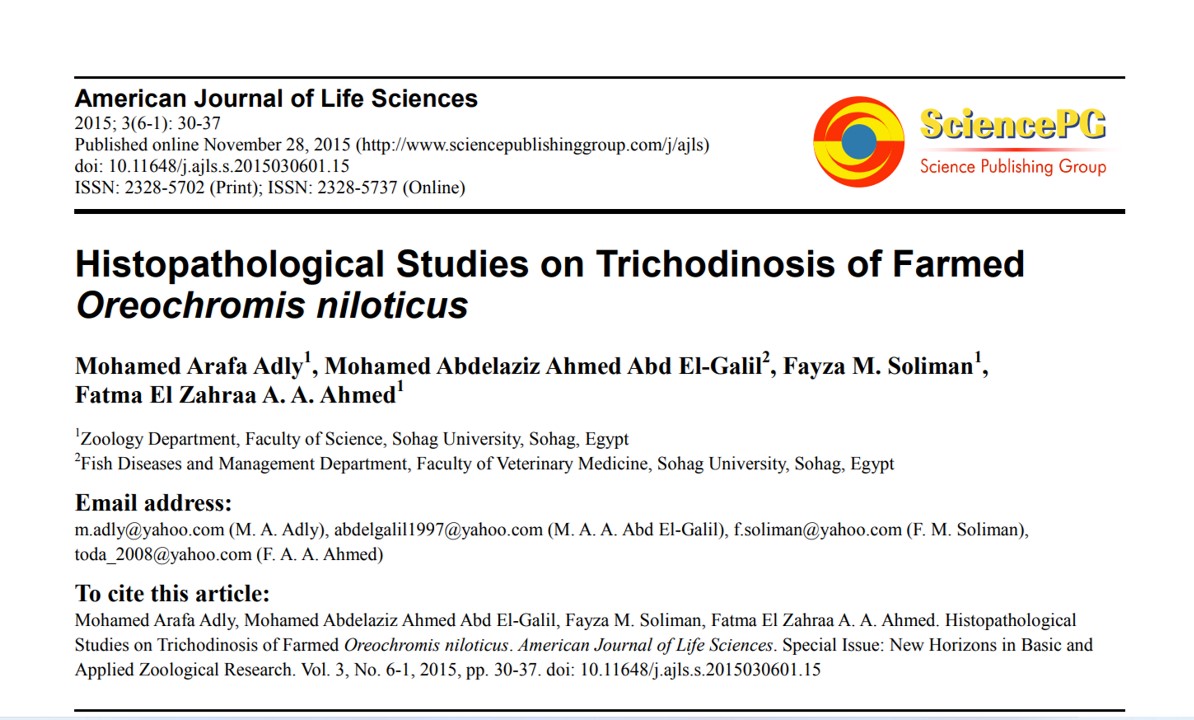The present study was planned to study the trichodinosis in the farmed freshwater fish Oreochromis niloticus and investigate the histopathological alterations on the skin and gills. The diseased fish had signs of irritation in the form of erratic swimming, swimming near borders, scratching against hard objects, detached scales, excessive and turbid mucus and ulcerations; and signs of asphyxia in the form of rapid operculum movement, surfacing and piping or gasping. Histopathological examination using light microscopy on the skin of O. niloticus with moderate trichodinosis infection revealed detachment of the epidermis and disarrangement of the collagen bundles in dermis. Heavy infections caused sloughing of the epidermis and the remaining dermis had disarranged collagen bundles and was infiltrated with melanin- carrying cells, forming a thick dark band. Scanning electron micrographs of infected skin surface showed cracked and irregular thickness of squamous epithelium at the whole surface with erosions and marked ulcerations. Histopathological examination using light microscopy on gills of O. niloticus with moderate trichodinosis infection revealed erosions in the epithelial lining cells of the secondary lamellae, causing thinning of their peripheral portions. Heavy infections caused hyperplasia and an intense lamellar epithelial lifting. Scanning electron micrographs of gill arches showed the gill filaments with irregular thickness at their whole lengths. Moreover, filamentary and lamellar surfaces were cracked, spotted and had small notches due to the crawling movement of the Trichodina parasites.


